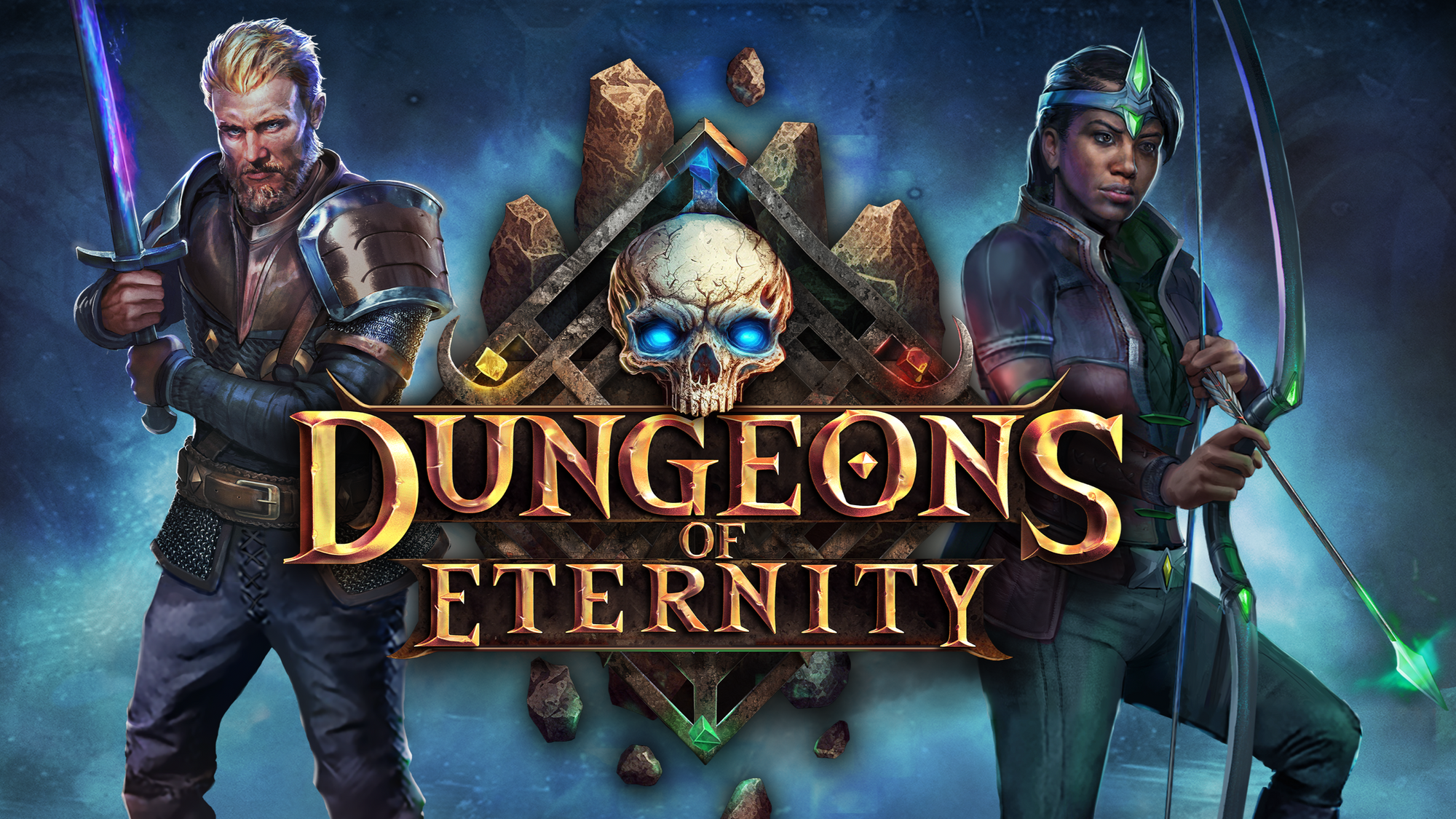Dungeons of Eternity could become one of the best VR co-op games I’ve ever played, bringing a fantasy action RPG to Quest next month. Here is our review-in-progress.
Focused on gameplay over narrative, Dungeons of Eternity’s story is practically non-existent and explained in the tutorial. Set on the planet Eternity, you are tasked with exploring randomly generated dungeons, overcoming traps to find treasure. That’s honestly all this story needs and the game feels better for it. You can go adventuring alone, but like most games designed around co-op, this is best experienced with others.
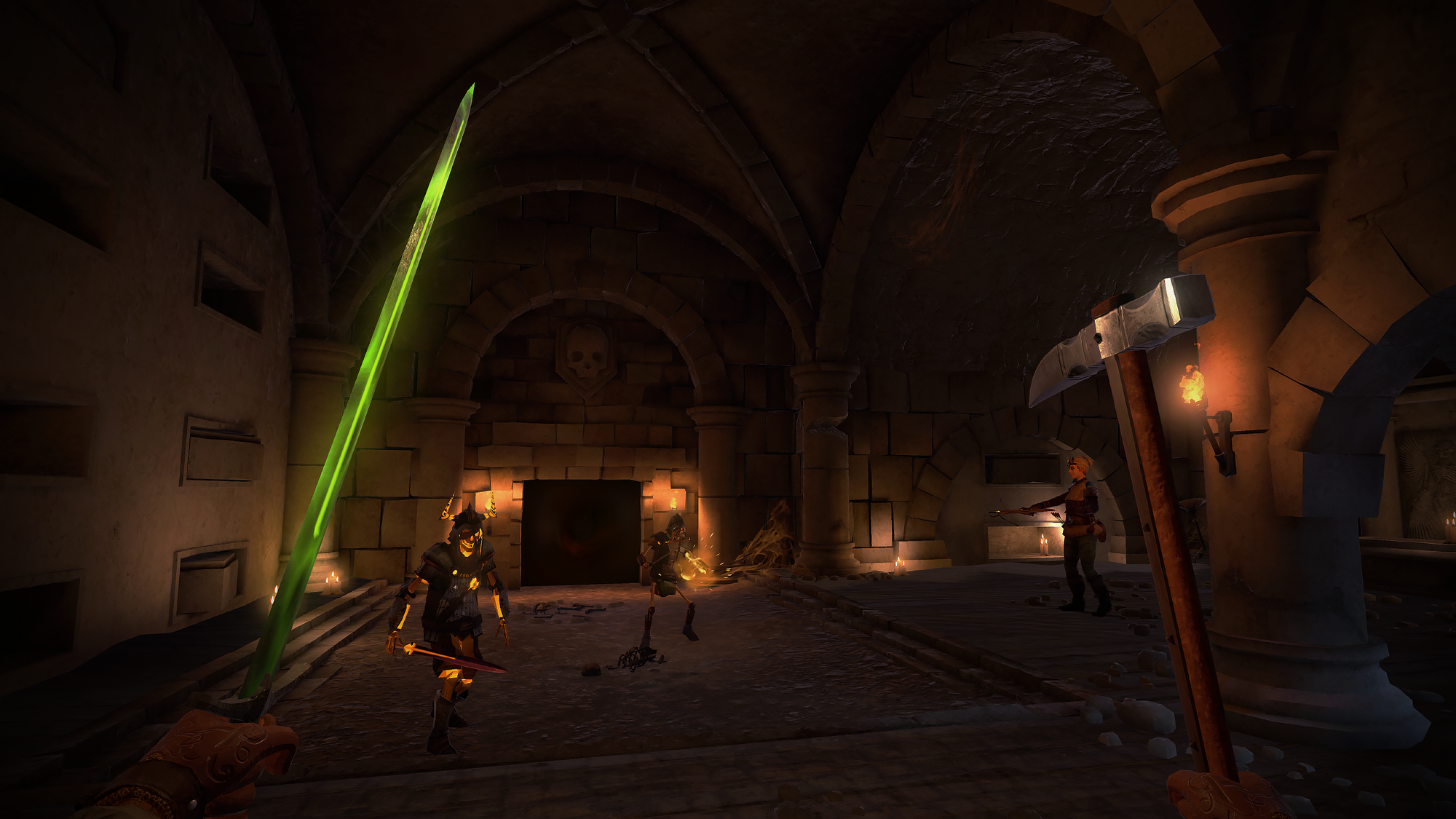
Dungeons of Eternity features three different gameplay modes and during pre-release, I’ve mainly played ‘Dungeon Raid’ with an Othergate dev and fellow journalist Nicholas Sutrich. This is the more traditional “dungeon crawler” option, where each run features multiple paths with different obstacles like giant swinging axes across narrow paths and lava. Some involve environmental interactions like pulling levers to open up doors or holding torches in dark areas – small things that build the immersion well.
I haven’t seen everything yet, but the four biomes already show great variety and the loot system encourages exploration. Most rooms hide coins and potions that are picked up using a magnetic grab, but several hide treasure chests with better rewards like new weapon designs or avatar cosmetics. From what I can tell, coins aren’t shared between the party but treasure chest loot is, sometimes awarding different items depending on what you already have.
Don’t expect a smooth ride though. Entering new rooms usually kicks off a small enemy wave. Some breakable barrels and pots hide either coins or spiders, making that a minor risk or reward situation. If you’re downed mid-combat, other party members can repeatedly revive you but if everyone falls, that’s game over. There’s a lot going on and for a hack-n-slash game, I’d consider combat its most important aspect. Dungeons of Eternity thankfully nails it.
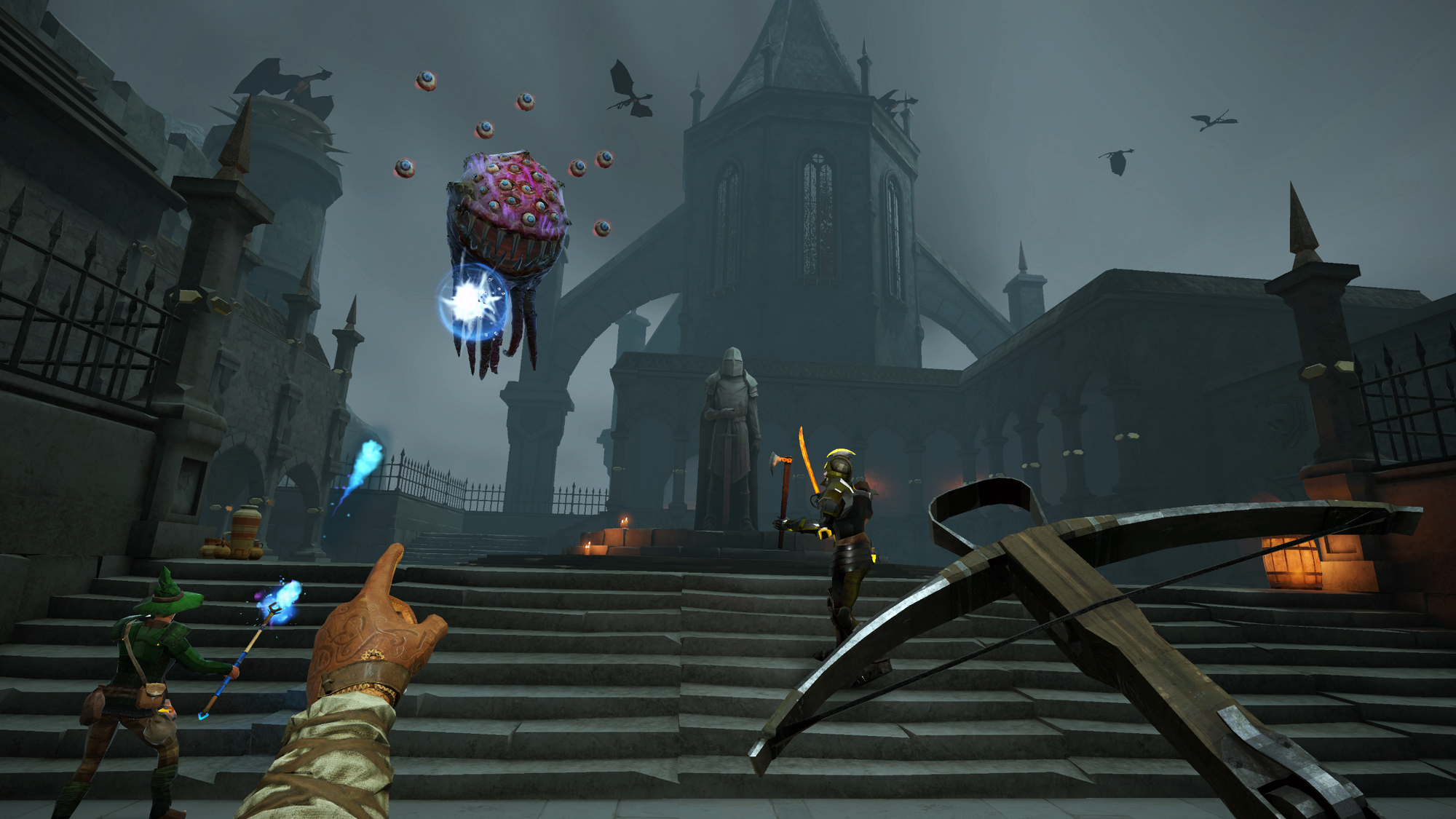
Melee weapons are holstered around your waist. Between maces, swords and daggers, there’s something for all playstyles, helped by an intuitive parry system that simply requires blocking enemy swings without any complicated actions. Axes are my highlight as you can throw them for mid-range damage and call them back using the magnetic grab, making you feel like Kratos.
Ranged weapons, shields and magic staffs are placed on your back and I was immediately taken with the bows. Finding good VR archery is tough, as many games struggle between realistic movement and what suits gameplay. You’re often pulling your arm a little too far to make it comfortable on repeat, but Dungeons of Eternity walks this line well. The 15+ monster types, ranging from basic skeletons to floating abominations, keep the combat interesting.
Eventually, I reached the end of Dungeon Raid and that involved finding drone batteries to make my escape, usually held by enemy units. A challenging fight for survival ensues. Once you’re out, each party member is awarded EXP and you’ll gradually level up to unlock more items. Progression combined with the random dungeons gives this strong replayability, and I’m itching to jump back in soon.
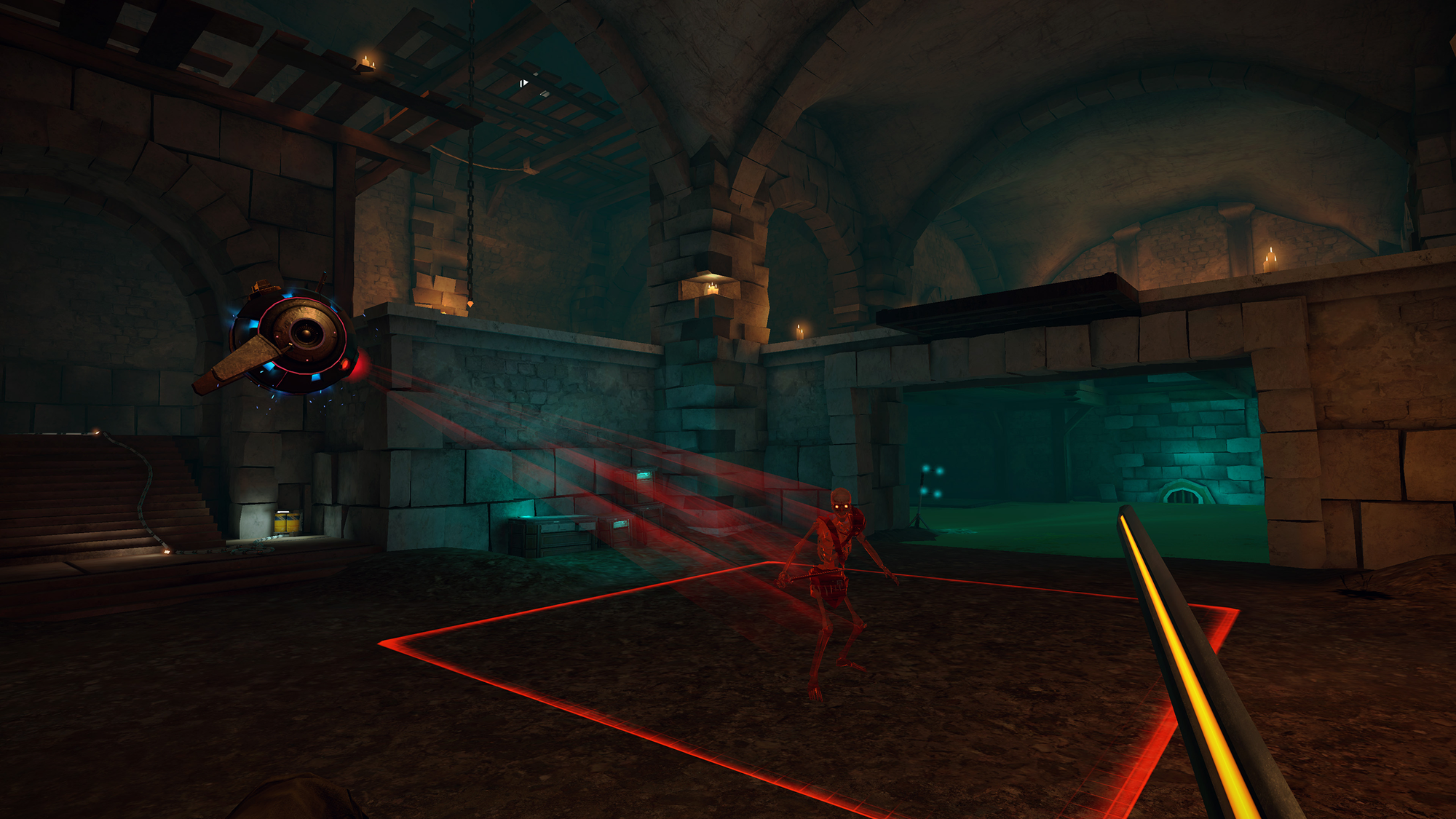
There’s two other modes to choose from but I’ve only tried ‘Soul Harvest’ so far. It’s a relatively contained horde mode that requires collecting souls in a single room. One player wields a Soul Staff, tagging enemies before your party members take them down, collecting souls for a Soul Keeper across three increasingly large waves.
I enjoyed the change of pace but taking down 50+ enemies across waves was a little much and began feeling repetitive. I’m hoping this will change when the game launches. ‘Crystal Hunt’ is the mode I haven’t tried yet, which involves finding three crystals to power up ancient machines. More on that soon.
Dungeons of Eternity – Comfort
Dungeons of Eternity features extensive comfort options. You can choose ‘Continuous’ movement for stick-based artificial locomotion, teleportation and a ‘Blink’ setting that’s similar to teleport but includes a quick fade. Directional movement can be based around your head, left hand or right hand. Smooth and snap-turning cameras are available, the latter providing 15°, 30°, 45° and 60° turning angles.
Seated gameplay is supported and adjusts holster positions for greater ease. while a realistic unholster option means weapons don’t automatically use the correct grip. Blinders for a tunneling vignette can be activated when moving. Sprinting is activated by holding down the left or right stick, depending on your selected dominant hand. Quick climbing or sliding down involves gripping the chain and holding the A button while looking up or down. Finally, you can change the button used for pulling up your inventory.
So far, I’m highly impressed by Dungeons of Eternity and the high production values are evident. Beyond the comprehensive comfort settings and engaging gameplay, the visuals look great on Quest 2 and environments feel suitably tense but never creepy. It’s incredibly polished and while post-launch content updates are planned, this already feels like a complete experience.
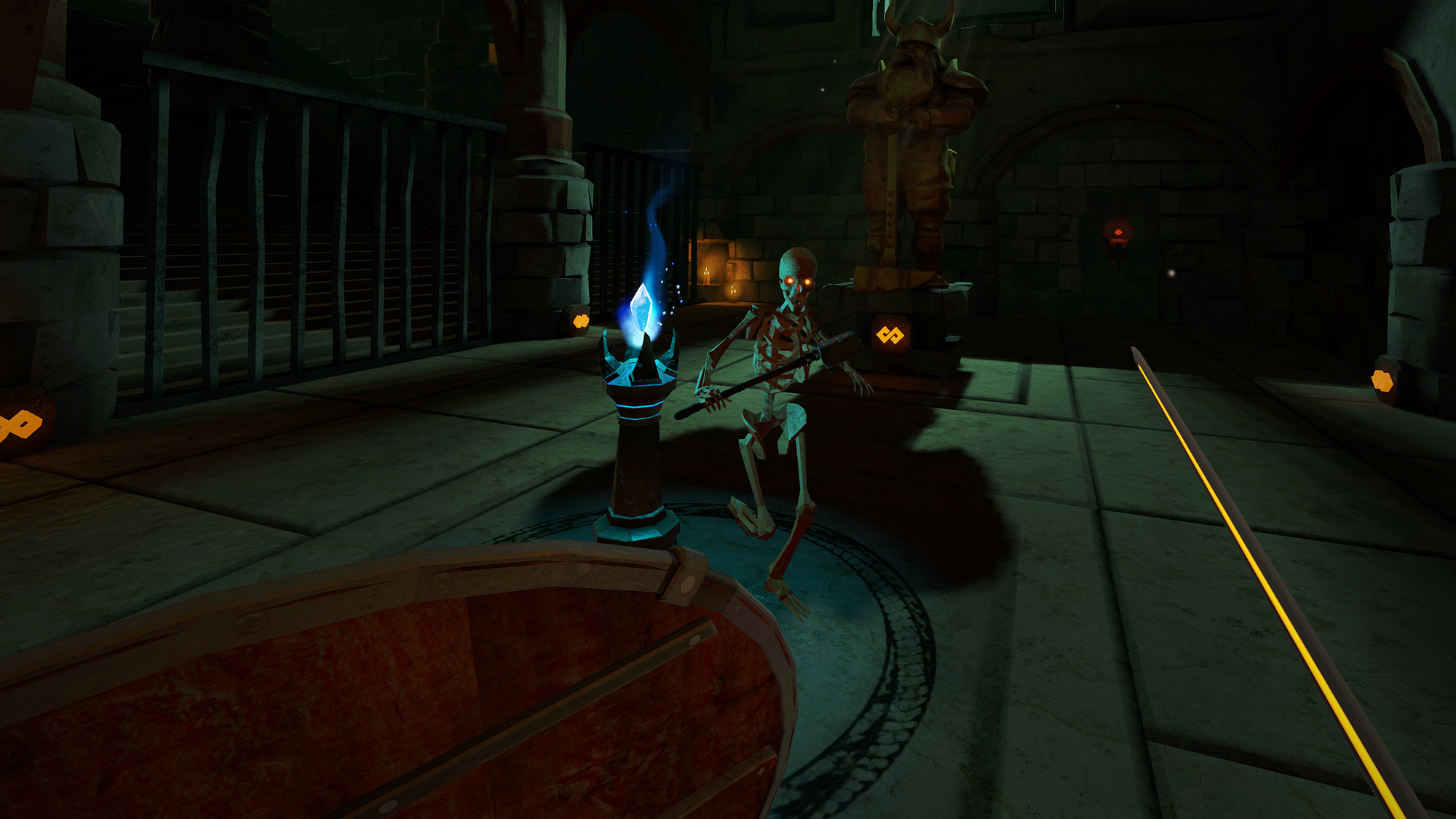
Intriguingly, I discovered an optimisation button in the options menu to boost visuals for Quest 3 users. I don’t have Meta’s upcoming headset yet but even on Quest Pro, activating this makes a considerable change. Everything is brighter compared to Quest 2 and though the game logo looked oversaturated, background environments were notably sharper.
Dungeons of Eternity VR – Verdict In Progress
Giving Dungeons of Eternity a full review right now would be premature. There’s plenty more I need to try, though my initial impressions are highly promising. Combat feels excellent, finding loot with friends is great fun and the progression system feels both replayable rewarding. It’s on course to become my favourite VR co-op game yet and I’ll bring you my full thoughts when it releases next month.
